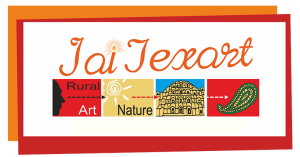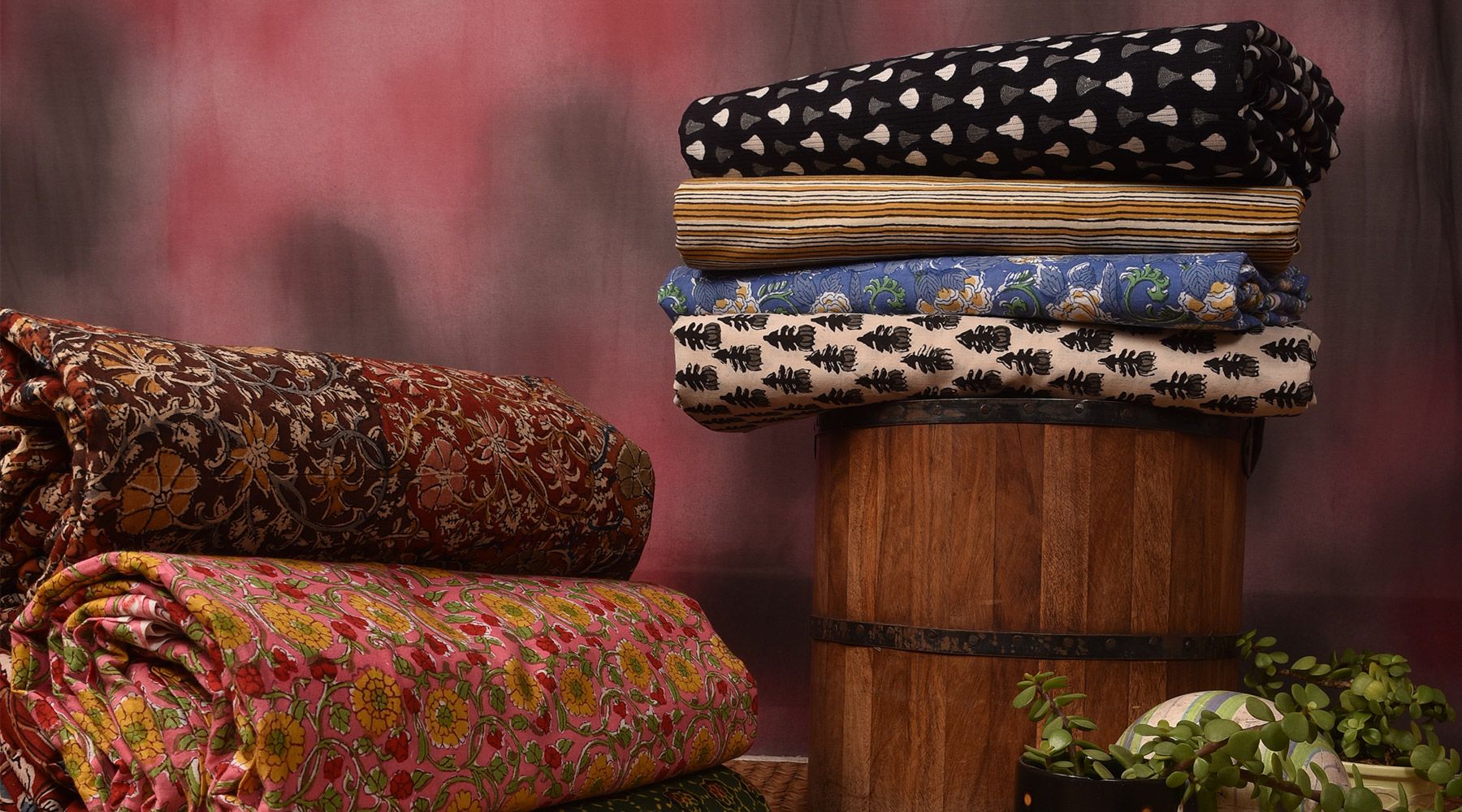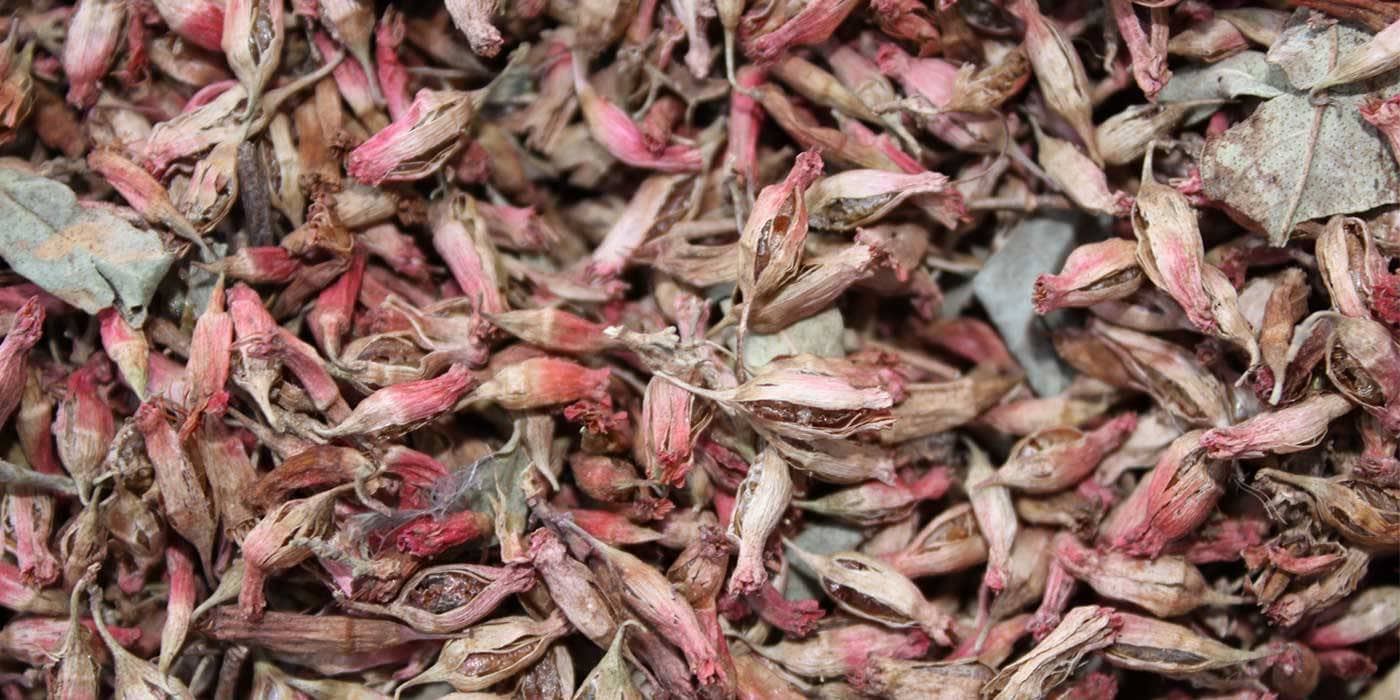The art of making natural dyes is one of the oldest known to human. In India, it was used for colouring fabric and other materials. Though the very earliest dyes were discovered by accident using berries and fruits, with experimentation and gradual development the vegetable dyes have resulted into a highly refined art.
India’s expertise in natural and vegetable dyes dates back to ancient times. The Veda, India’s most revered scriptures, refer to the tinctorial properties of several dyestuff using centuries ago. There are also references to dyes and their use in the “Arthasastra of Kautilya. Later works confirm that the weaving and printing on fine textile were part of a continuous tradition. The cave painting of Ajanta bears testimony to the use of printed and dyed costumes nearly 1400 years ago. The use of mordanted cotton yarn and fabric found in Indus valley site of Mohenjodaro. The Indian craftsman’s knowledge of the technology of mordants and its use in textiles remained a closely guarded secret for a long time. India had a virtual monopoly in the production of dyed painted and printed textiles.
From 15th to 19th century, block printed resist dyed textile from Gujarat and Deccan adorned Europeans and their homes. The discovery of chemical dyes in the west in 19th century dealt a massive blow the Indian textile industry. There was a gradual decline in the use of natural dyes which were more expensive and more difficult to use in comparison to chemical dyes. Today there are only few areas where natural dyes are still used. Bagru near Jaipur in Rajasthan (India) is one of them. However in those areas though craft persons are applying old methods but using chemical dyes with natural dyes. Number of persons with the knowledge of the art is now limited and reducing day by day.
However due to serious efforts taken by various agencies world over, environmentalist, natural dye practitioners, textile & fashions designers, demand of natural dyed & printed fabric & its products is continuously increasing . Hand block printed fabric with natural dyes section is main beneficiary for revival in the demand . Average earning of the craft person has also increased. It is attracting the new generation towards this craft. More educated and professionals are entering into this craft which is a positive signal.
Some of the chemical dyes were found to be associated with hazards effecting human life, creating skin diseases and lungs problems. Environmentalists, therefore, started searching for substitutes of chemical items which led to the increase in use of natural dyes. The natural and vegetable dyes are more skin friendly. These colours have some depth which chemical dyes lack. The natural dyes are eco friendly and biodegradable and non–carcinogenic. These are soft and low toxic colours and generally non allergic
In the recent days the inherent advantages of vegetable dyes & its awareness has resulted in the revival of demand of the dyes. To become part of revival team for this craft Jai Tex Art had set up hand block printing unit at Bagru (near Jaipur ) in 2006-2007. This unit is dedicated for dyeing & printing using natural and vegetable dyes”. We are also involved in research and development of natural dyes & its documentation .
Basic sources of natural and vegetable dyes
Basic sources of natural & vegetable dyes are parts of plants such as leaves, flowers, fruits, seeds, barks & roots of dye yielding plants. Minerals such as Prussian blue, red ochre and ultramarine blue. Animal origins such as lac, cochineal (indrogopa) and kermes.
Detail of dyes normally used for dyers & printing are as follows:
LAC
It is extracted from Lacifer Lacca insects. It is used for dyeing of wool, silk and cotton fibre base fabric. It gives reddish shades with tin mordant and purplish shades with copper mordant. Different shades like olive green, ruby red, amethyst, yellow, black, purple, steel grey etc can be obtained by using various mordants.
Forest area nearby Ranchi has major producing centre for this dye.
The colour obtained exhibit good light, wash and rubbing fastness.
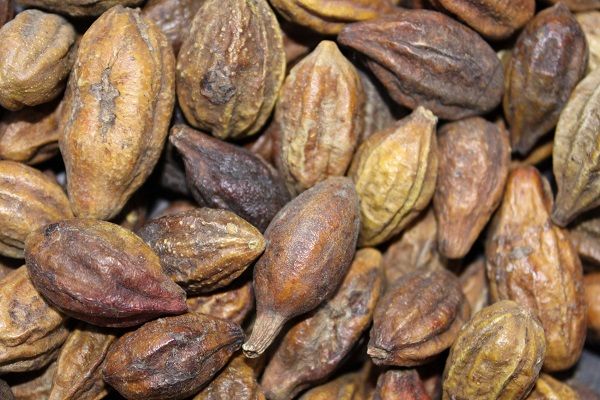
HARDA ( BLACK MYROBALAN)
It is prepared from fruit of Harda. It yields yellow and grey shades with aluminium and ferrous mordants respectively. It is used for dyeing of wool and silk and cotton fibre base fabrics. Botanical name is terminlia chebula. This is also a natural mordant .
Forest area nearby Goa, Konkan is major producing centre for this dye.
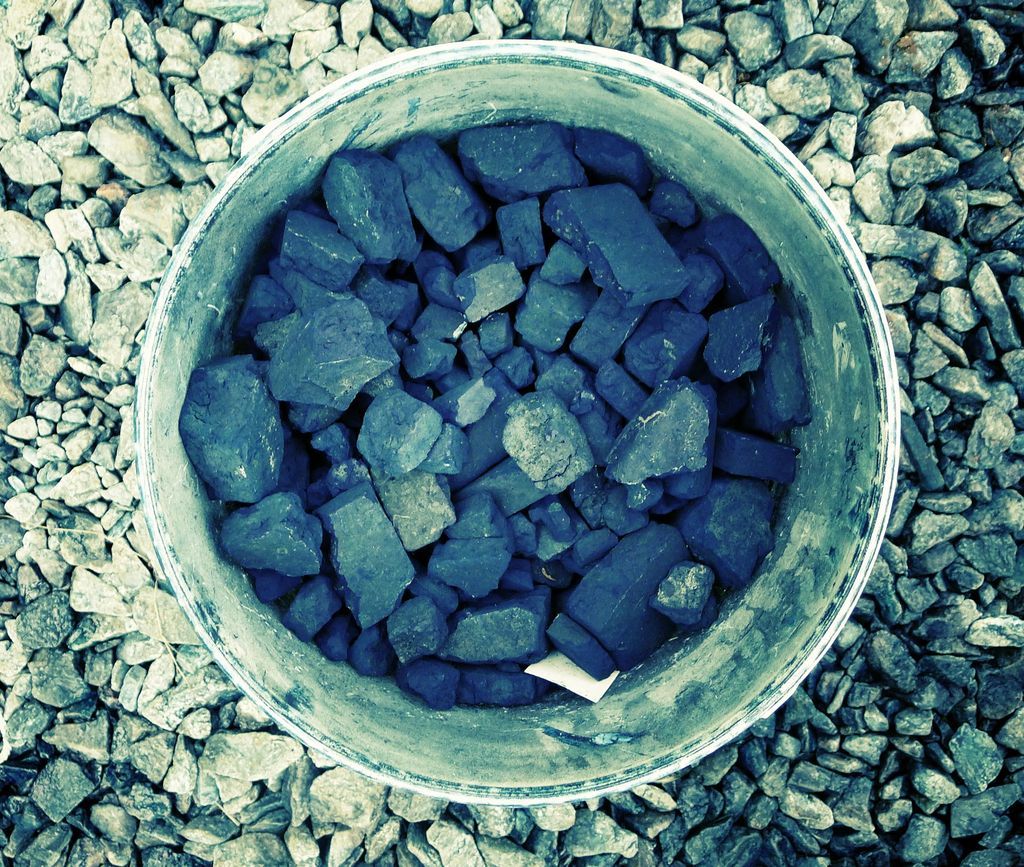
INDIGO BLUE
It is a fermented dye of leaves of indigoferra tinctoria. It gives blue shades. It can dye cotton, wool and silk fibre base fabrics .This is one of the most ancient natural dyes used by humans in textile.
HIMALAYAN RHUBARD
It is prepared from a Himalayan shrub. The roots of this plant are used for dye. It gives yellow and orange shades. It can be used directly and with alum mordant on wool and silk fibre base fabrics, Botanical name is Rhumemodin.
The colours obtained exhibit average light, wash & rubbing fastness .
KAMALA DYE
It is prepared from the deposit on the flowers of the kamala tree. It gives yellow shades on wool and silk fiber base fabrics. It can be used directly or with mordant also.
The colours obtained exhibit average light, wash & rubbing fastness .
MANJU PHAL
It is prepared from the nut galls of Manju Phal tree. It is used for dyeing of silk and wool fibre base fabrics both directly or with mordant. It gives cream and grey shades with alum and iron mordant. Botanical name is Quercus Infectoria Oliver.
The colours obtained exhibit average light, wash & rubbing fastness .
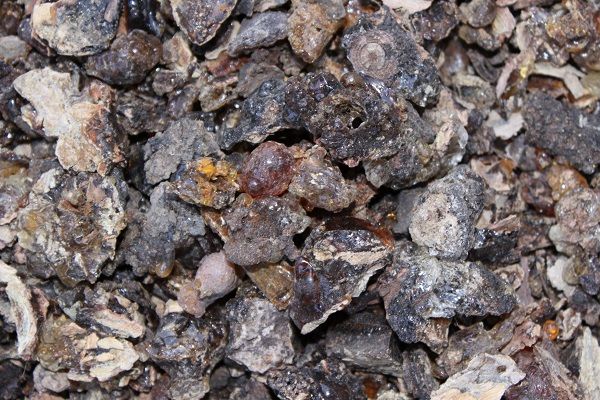
CATECHU ( KATHA )
It is extracted from the bark of Indian gum Arabic tree. It is used for dyeing of cotton fabrics with mordants. It yields brown, yellow, grey and black shade. It is having very good fastness. Other local names are Kala Kaththa, Khair, Taeja and Cutch. Botanical name is Acacia Catechu.
The colour obtained exhibit very good light , wash & rubbing fastness.
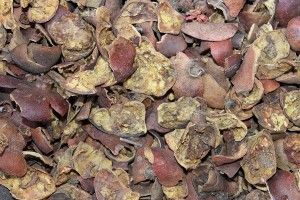
POMEGRANATE ( ANAR, DARIM)
The dye is extracted from its fruit rind. It gives yellow colour shades. The shades obtained exhibit good fastness to washing rubbing and light. Its local name is Anar. Botanical name is Punica Granatum.
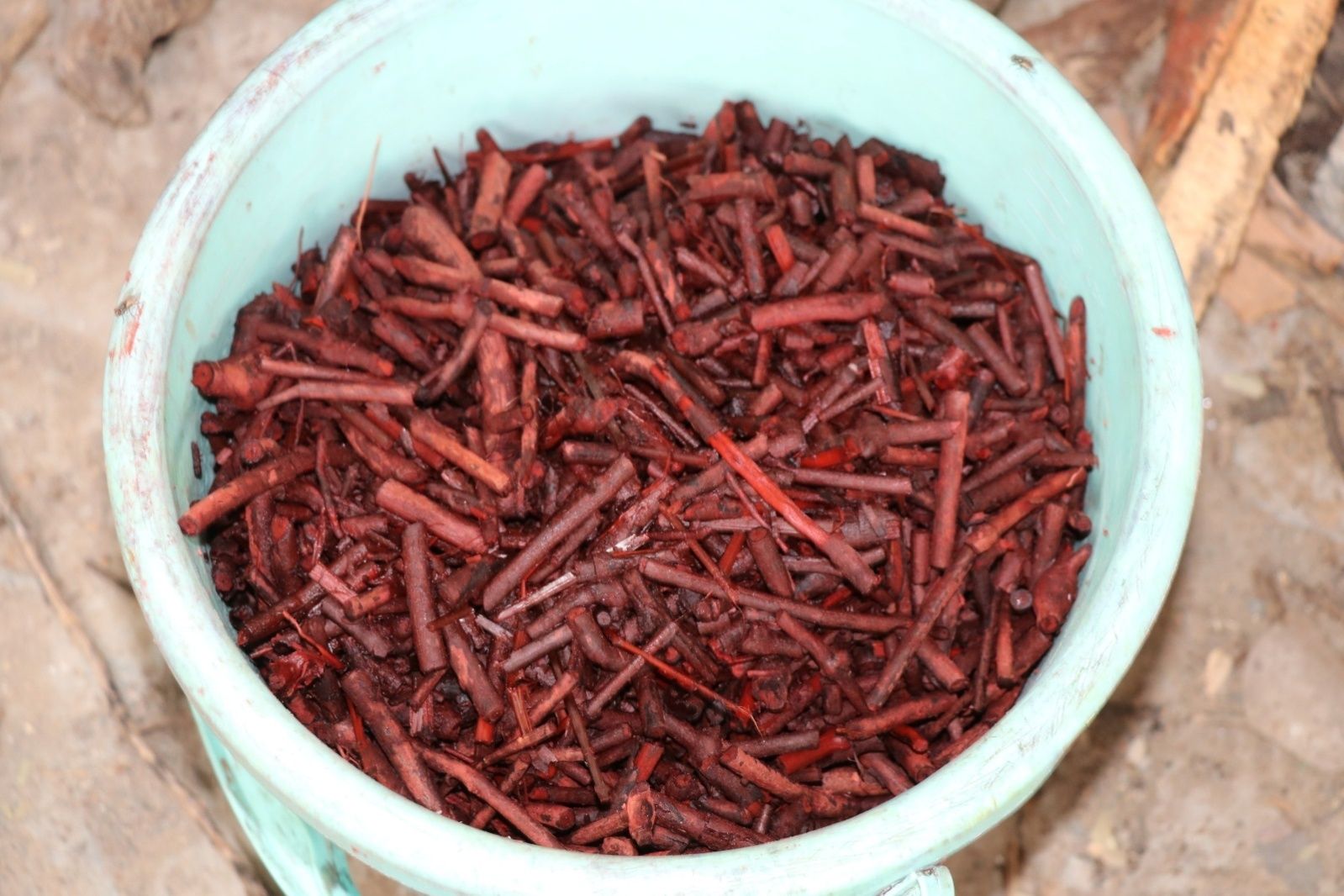
MADDER
The dye is extracted from root bark and roots of the madder tree.It gives red, pink and orange shades .The colours obtained exhibit good fastness to washing rubbing and light. Local names are Madder, Manjistha, Majith, and Mangito. Botanical name is rubia cardifolia (Indian madder) rubia tinctoria (European madder).
WALNUT ( AKHROT)
Bark of Akhrot tree is used for the dye. This yields brown shade with good fastness. It is used for dyeing of silk and wool fibre base fabrics. Botanical name is Juglano Regia. Forest area nearby Jammu and Kashmir and Himachal Pradesh are major producing centre for this dye.
AL ( ALI KI LAKDI)
The dye is extracted from root bark and roots of the Al tree. The colour obtained exhibit good fastness to washing rubbing and light. It gives pink/red shades. Its local name is Al Ki Lakdi. Botanical name is Morinda Tinctoria Roxb.
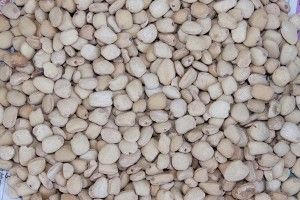
IMALI ( TAMARIND TREE )
The dye is extracted from leaves, wood ash and fruit of the Tamarind tree. It is used as dye fixer. Botanical name is Tamarinddus Indica It is freely available in India.
ARJUN ( WHITE MURDAH )
The dye is extracted from bark of the Arjuna tree. It yields Red /Pink shades with average fastness.Botanical name is Terminalia Arjuna.
Forest area nearby Bihar, Jharkhand, Chhattisgarh and West Bengal are major producing centre for this dye.
DHAURA KA FOOL
The dye is extracted from flower of the Dhaura tree. It yields Red /Pink/brown shades with good fastness. Botanical name is Woodfordia Floribunda.
MORDANTS
Very Few natural dyes are colour fast with fibers. Mordants are substances which are used to fix a dye to the fibers. They also improve the take up quality of the fibre and help improve colour and light fastness.
We at JTA use the following Mordants:
- Alum Mordant
- Copper Mordant
- Chrome Mordant
- Tin Mordant
- Iron Mordant
These mordants create different shades with combination of natural dyes.
